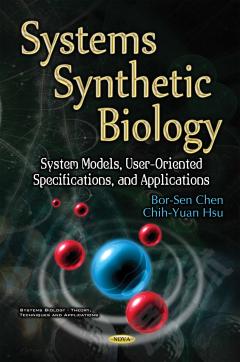Systems Synthetic Biology: System Models, User-Oriented Specifications, and Applications
In this book, the synthetic gene circuits are modeled by nonlinear stochastic systems to consider random genetic variations and random in vivo environmental disturbances. The authors’ design purpose is to engineer a robust genetic circuit to achieve a desired behavior or product to tolerate intrinsic random fluctuation and environmental disturbance in the host cell. In this book, the authors first construct several promoter-RBS component libraries according to their regulatory strengths. Then, based on a stochastic system model, they use design biological filters, biological transistor biosensors, genetic lysis circuits, and a genetic transmitter and receiver by selecting adequate promoter-RBS components from their corresponding libraries to meet the prescribed design (user-oriented) specifications through the proposed library-based researching method. These synthetic gene circuits are also implemented by real experiments to confirm their design performance in this book. Based on the purposed synthetic design method, we could achieve these design specifications at one time, saving much trial time by the conventional methods. Therefore, the purposed systematic design methods in this book have many potential applications to more complex gene circuit design of systems synthetic biology in the future.
{{comment.content}}








 京公网安备 11010802027623号
京公网安备 11010802027623号